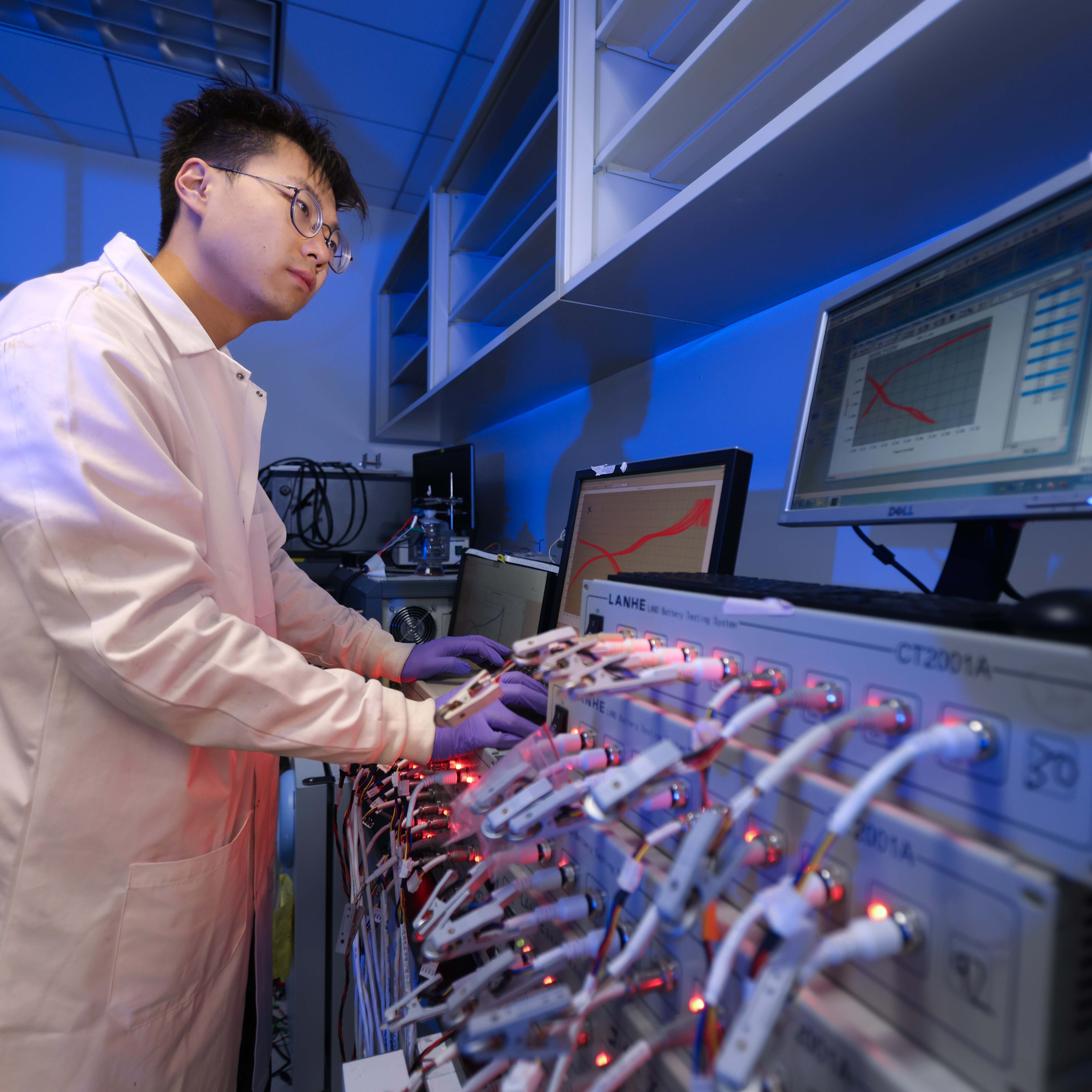News Story
Computer-designed nanoparticles could speed us toward hydrogen economy
COLLEGE PARK -- Creating a new material is hard and time consuming: there are dozens of elements available, all with different properties, and combined they can have different properties still. Computing power can help match and predict the structure of a new material even before synthesis.
Materials scientists and engineers at the University of Maryland, College Park; the University of Pittsburgh; and Johns Hopkins University in Baltimore, have now adapted this technique to create nanoparticles, tiny collections of elements often ten thousand times smaller than a human hair, that can act as assistants in a reaction, or catalysts.
“Alloy nanoparticles hold great promise for catalyst discovery in a virtually unlimited compositional space,” said Dr. Liangbing Hu, professor of materials science at the University of Maryland, College Park. “This process is now largely accelerated by computational-aided design and synthesis. These high performance and durable catalysts could expedite a future with clean hydrogen energies.”
Specifically, they used computers to predict which elements would help create energy from hydrogen by breaking down ammonia. The two best elements for assisting this reaction are rubidium and nickel, but they are not usually mixable. By adding other elements suggested by the computer simulations and heating the mixture up to more than 2,000 degrees Fahrenheit (1500 Kelvin), they were able to create nanoparticles that helped break down ammonia into its components nitrogen and hydrogen.
The nanoparticles can be used over and over and had a high efficiency, breaking down all of the ammonia provided in the experiment.
These high performance and durable catalysts could expedite a future with clean hydrogen energies.
Dr. Liangbing Hu, Minta Martin Professor of Enginerring
The researchers took pictures of the tiny particles in the Advanced Imaging and Microscopy Lab with an energy-dispersive X-ray spectroscopy (EDS) instrument that can show how the different materials in the particle are distributed.
The research was published in the journal Science Advances on 13 March 2020.
The high entropy nanocatalyst technology by thermal shock is being commercialized by HighT-Tech LLC.
Computationally-Aided, Entropy-Driven Synthesis of Highly Efficient and Durable Multi-elemental Alloy Catalysts
Yao, Liu and Xie, et al. Sci. Adv. 2020; 6 : eaaz0510
DOI: 10.1126/sciadv.aaz0510
Published March 17, 2020









